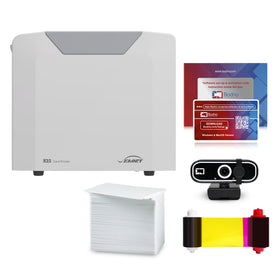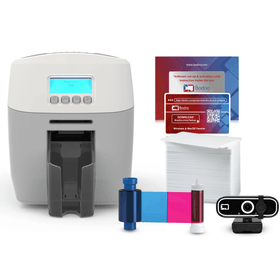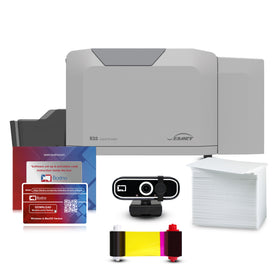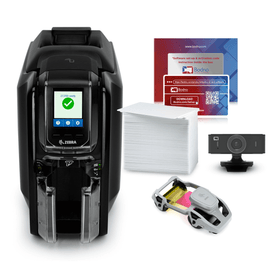Photo ID printers these days come in a variety of shapes and sizes. One of the main considerations you need to make before buying is examining the printing technology used. Right now, there are at least four different types of ID card printer systems used in the industry.
Thermal Printing
These are simple digital IDP printers; much like the other computer-based printers in your home and office, you generally get a resolution of 300 dots per inch (dpi) on each rendered job, which more or less eliminates the potential for jagged edges and similar issues. Digital thermal transfer is a fairly common technology, wherein color gets transferred out of a single-use ribbon and onto a receptor material.
Dye Sublimation Printing
This technology allows variable density and size among color dots. Dye sublimation also ensures bright colors and smooth edges. The YMC dyes actually penetrate the receptor after coming out of the dye ribbon. The diffusion of each dot is based on how much heat the printhead applies to it. When the latter gets to any of the dye panel boundaries, it lifts itself so that the card can be backed up and primed for the next run. The head comes back down to render the next color, suitably combining secondary colors to put out photo-quality images.
In the “fully saturated” combination, the three colors can be used to print “process black” graphics and text, which look a lot like “black resin printing”. The Zebra ZXP Series 3 is among the hottest selling printers of this type.
Mass Transfer Printing
A mass transfer panel does not allow the printer to control either the density or size of the ink dot. Companies desiring continuous tone images like photographs could still achieve a comparable look, thanks to the process called dithering. By utilizing this technique, the feel of continuous tone is conveyed using discrete ink dots.
The mass transfer ribbon comprises monochrome resin placed on a slight masking film. This resin is generally black, for which reason this printing type is also called “black resin printing”. On heating, the resin gets taken off the backing and placed on top of the receptor as a smooth layer. This technology gets you sharp graphics and text, as well as infrared readable barcodes. Photo ID produced this way can be used for many things.
Direct-to-Card Printing
Both dye sublimation and thermal transfer use heat to move pigments and paste them in a way following the digital image that the user picked. Said pigment moves directly from the ribbon and onto the flat surface. The problem though is that most card materials in the market are not durable enough to handle this process.
Direct-to-card technology is based on intimate, uniform contact. Here, the dye ribbon, print head, and card surface remain touching so that uniformity can be maintained when the dye is applied directly on the card surface.
Retransfer Printing
This type of printing employs a process known as reverse thermal transfer. Where dye sublimation printers use print heads and make direct deposits of dye onto the card, retransfer printers print in two steps.
- First, a high-resolution image is reverse-printed on the receiving layer attached to an intermediate film of flexible nature. The image is printed on this film and not the card. This is similar in many ways to direct-to-card printing.
- Heat and pressure are used to move the intermediate film to the surface of the card. The layer is thermally bonded here, and the rendered image stays safe under it.
The Pros of Retransfer Printing
- Higher image quality
- Ability to print on multiple types of card
- Improved tamper resistance and security
- Lower printhead costs
What to Look at before Buying an ID Printer
It is important to pin down your precise identification and security needs and have this configured right at the outset. Based off of what you know after that process, it is easier to choose the right equipment for you. The following things generally come into play in your final decision:
- The card type you are going to use
- The number of cards you wish to print
- How frequently you would need to print
- What printing elements each card needs
- The quality of printed images
- The kind of encoding needed on the card
The following considerations are important as well.
- Card size: The average wallet-fitting plastic card is CR-80, with dimensions of 3.375” x 2.125” and a thickness of 0.75 mm. The last can be altered based on preference.
- Printing speeds: Card printers come with a range of speeds, with the speed you get depending on how much you are willing to spend on yours. If you want dual-side printing, the process would obviously go significantly slower. The application you choose can have an effect as well.













 Software
Software Upgrades
Upgrades Support Plans
Support Plans Self Serve
Self Serve Printer Setup
Printer Setup


